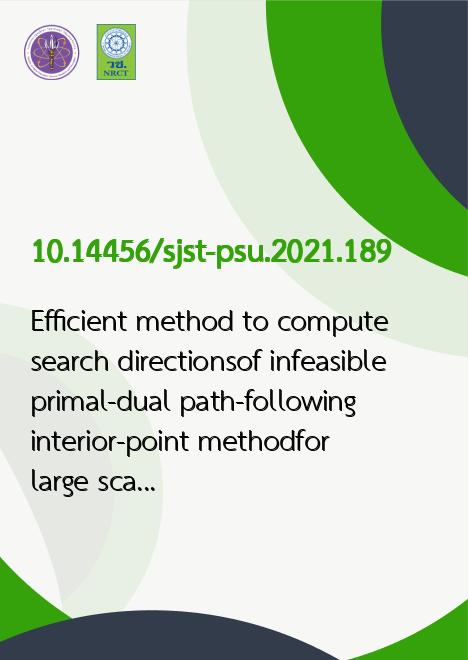
|
Efficient method to compute search directionsof infeasible primal-dual path-following interior-point methodfor large scale block diagonal quadratic programming |
|---|---|
| รหัสดีโอไอ | |
| Creator | 1. Duangpen Jetpipattanapong 2. Gun Srijuntongsiri |
| Title | Efficient method to compute search directionsof infeasible primal-dual path-following interior-point methodfor large scale block diagonal quadratic programming |
| Publisher | Research and Development Office, Prince of Songkla University |
| Publication Year | 2564 |
| Journal Title | Songklanakarin Journal of Science an Technology (SJST) |
| Journal Vol. | 43 |
| Journal No. | 5 |
| Page no. | 1449-1455 |
| Keyword | large scale quadratic programming, block diagonal, interior-point method, primal-dual path following, optimization |
| URL Website | https://rdo.psu.ac.th/sjst/index.php |
| ISSN | 0125-3395 |
| Abstract | Quadratic programming is an important optimization problem that has applications in many areas such as finance,control, and management. Quadratic programs arisen in practice are often large but sparse, and they usually cannot be solvedefficiently without exploiting their structures. Since existing methods for quadratic programming deal with dense cases and donot take advantage of any specific sparsity patterns in the problems, we propose a method to efficiently compute the searchdirections for the primal-dual path-following interior-point method for the large-scale quadratic programs whose Hessianmatrices have block diagonal structures and whose constraint matrices are dense by exploiting the special sparsity pattern in theproblems to avoid unnecessary computations involving blocks of zeros. Examples of quadratic programs with such structure, towhich our method can be applied, are linear model predictive control in automatic control and portfolio optimization wheresecurities from different sectors are weakly correlated. The time complexity of our method is significantly smaller than that ofusing a sparse linear solver. Additionally, the computational results show that our method is faster. |
